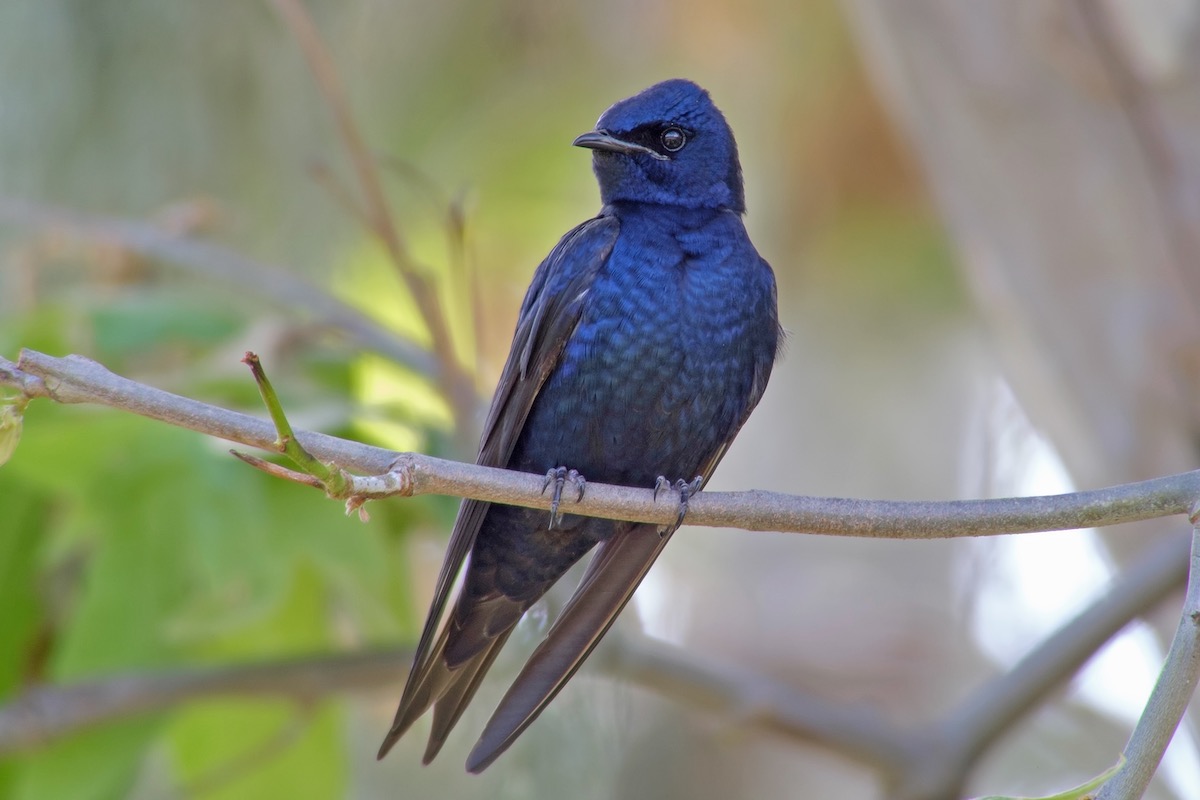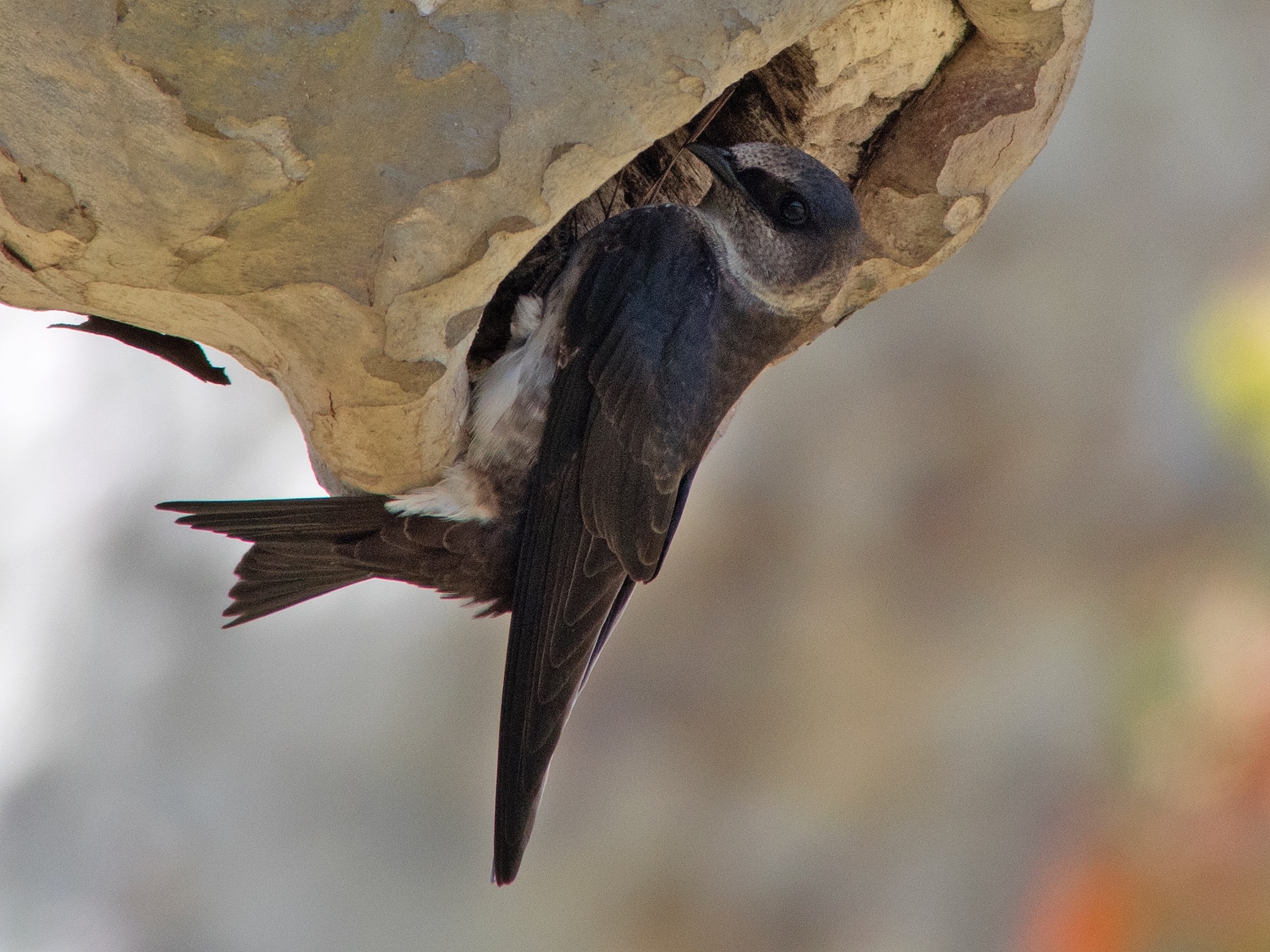Flying Under the Radar, Purple Martins in Santa Barbara County’s Nojoqui Falls Park
Even Most Birders Are Unfamiliar with the Presence of These Beauties

Even Most Birders Are Unfamiliar with the Presence of These Beauties

If Adrian O’Loghlen had his way, the purple martin would be given the title of Santa Barbara’s County Bird (there is currently no such designation). O’Loghlen, along with fellow birder Glenn Kincaid and other members of the Santa Barbara Audubon Society, has been monitoring the few remaining nesting pairs of martins in our county in and around Nojoqui Falls Park. They originally began their census work in part to test the commonly held theory that European starlings were driving purple martins out of their nesting areas. The species has faced a precipitous decline in Southern California, especially since the 1960s, when starlings began to thrive here — and both species nest in tree holes. Today, the handful of pairs that remain in our county constitutes one of the largest breeding groups in Southern California. It’s likely that insecticides are also playing a role in the bird’s demise. They were once considered a common bird in the west, even breeding in urban areas. In fact, in 1923, 12 were observed nesting in the building of what is now the Santa Barbara Museum of Art downtown.
The largest member of the swallow family, purple martins are stunning birds. The male is an iridescent blue-purple, at a distance often appearing all black. The female is gray underneath, with a matching gray collar around her neck. They feed and drink exclusively on the wing. The diet consists of flying insects, and they have a particular predilection for dragonflies.

There are several distinct populations of martins in North America. The eastern population is doing rather well, largely because they have different nesting requirements than that of their western cousins. Before Europeans settled the east, Native Americans would hang up empty gourds in which the martins would nest. Nowadays, eastern birds nest almost exclusively in human-provided martin houses, and they have done so for some time.
John James Audubon actively looked for taverns with martin houses to choose his lodgings. In 1831, he wrote, “Almost every country tavern has a martin box on the upper part of its sign-board; and I have observed that the handsomer the box, the better does the inn generally prove to be.”
Unfortunately, martins in Southern California are much pickier and will only nest in natural cavities in trees. O’Loghlen and Kincaid have seen no evidence that European starlings are driving the birds from their nesting sites, at least not with our local birds. As O’Loghlen told me, local starlings tend to be early nesters, while martins don’t begin breeding until June with the young fledging in July. In August, they begin their marathon migration and fly south to spend the winter, feeding by day over the savannas and agricultural fields of Brazil and Bolivia. At night, they flock to roost in the trees of village plazas.

Purple martins are loyal to breeding sites, returning year after year to their favored trees. And therein lies part of the problem for our local birds. The main stronghold is in Nojoqui Falls County Park and the surrounding area, where the birds nest exclusively in western sycamore trees. In recent years, many dead limbs have been removed from the sycamores because of perceived safety issues. To compound the problem, because of concerns with their power lines, the local electrical company has also removed some key limbs that martins used. At Nojoqui, the regeneration of sycamore trees is actively curtailed; if this practice continues, the site will have no maturing sycamores for the martins to return to when the old trees eventually die.
At Alisal Ranch, the other known local nesting site, two roadside trees that had contained several nests were cut down, and martins have not returned to breed in the area since then.
For most people, purple martins are flying under the radar — they are an unknown treasure. When O’Loghlen and Kincaid talk to park officials and visitors, they are completely unaware of the martins’ existence. This is something that the Audubon Society is anxious to change before we lose these birds as part of our local fauna. Perhaps if martins were to be designated as Santa Barbara’s County Bird, as O’Loghlen suggests, more people would pay attention to the plight of these beautiful, enigmatic globetrotters.
Hugh Ranson is a member of Santa Barbara Audubon Society, a nonprofit organization that protects area birdlife and habitat and connects people with birds through education, conservation, and science. For more information, see santabarbaraaudubon.org.
Please note this login is to submit events or press releases. Use this page here to login for your Independent subscription
Not a member? Sign up here.
You must be logged in to post a comment.